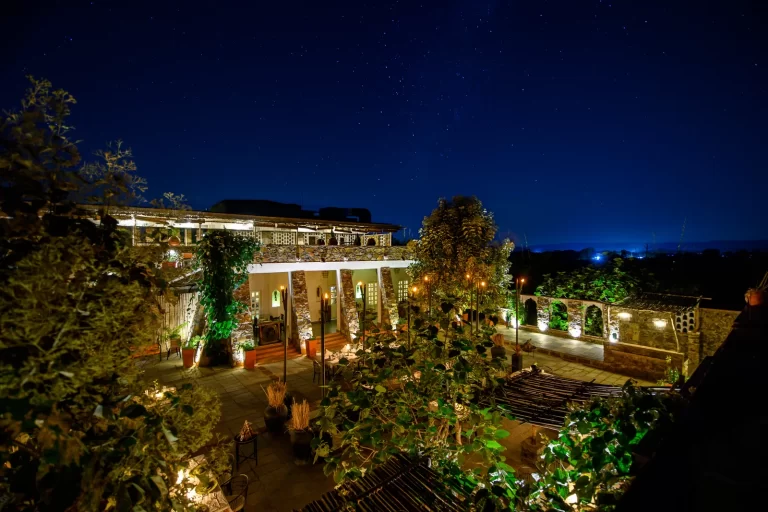Sariska lies near the town of Alwar, in the Northern Aravali Hills of arid north-east Rajasthan, has steep hills, long narrow valleys, low slopes and dry but dense forest covering its rugged landscape.
It is an important biodiversity area in the Northern Aravalli leopard and wildlife corridor. Beyond its famous relocated Tigers, the reserve is also home to species such as the Leopard, Hyena, Ratel, Caracal, Jungle cat, Nilgai, Sambar deer, Spotted deer, langur, Rhesus macaque, Four-horned antelope, Wild pig, Indian civet, Rufous-tailed hare, Common Mongoose, Ruddy Mongoose, Palm Civet, Pangolin, and Porcupines.
The Siliserh Lake on the edge of the park also houses a large number of crocodiles. Sariska is an excellent site for bird watching, more than 200 bird species have been recorded here.
Nearly 90% of the area in the sanctuary is covered with Dhok (Anogeissus Pendula) trees. During the dry summer and winter months, the forest looks brown and parched but comes alive with the vivid orange-red blooms of the flame of the forest tree in March-April. Troops of langurs relish their fleshy petals and birds feast on the nourishing nectar.
The displacement of villages from within Sariska’s protected area has proved to be a boon for wildlife. Tiger numbers are recovering, and in January 2023 tigress ST-14 gave birth to two healthy cubs. There is heartening evidence that with the reduction of human interference in the forest areas, wild animals have started behaving more naturally and moving freely.






